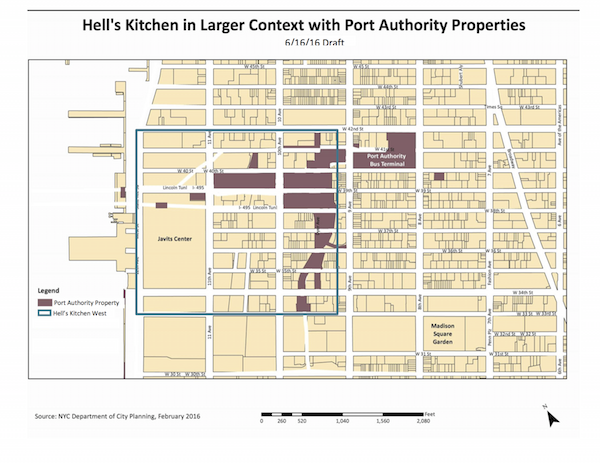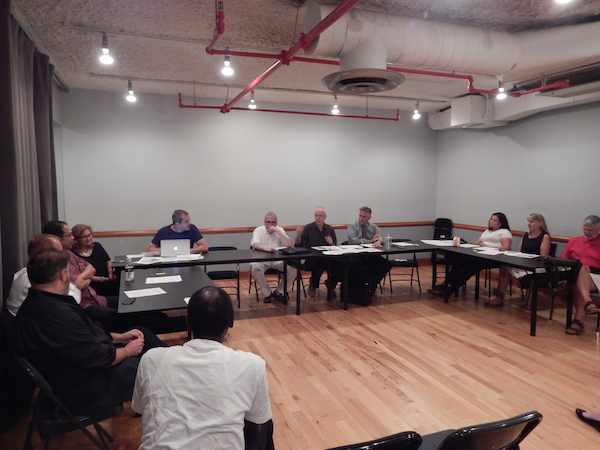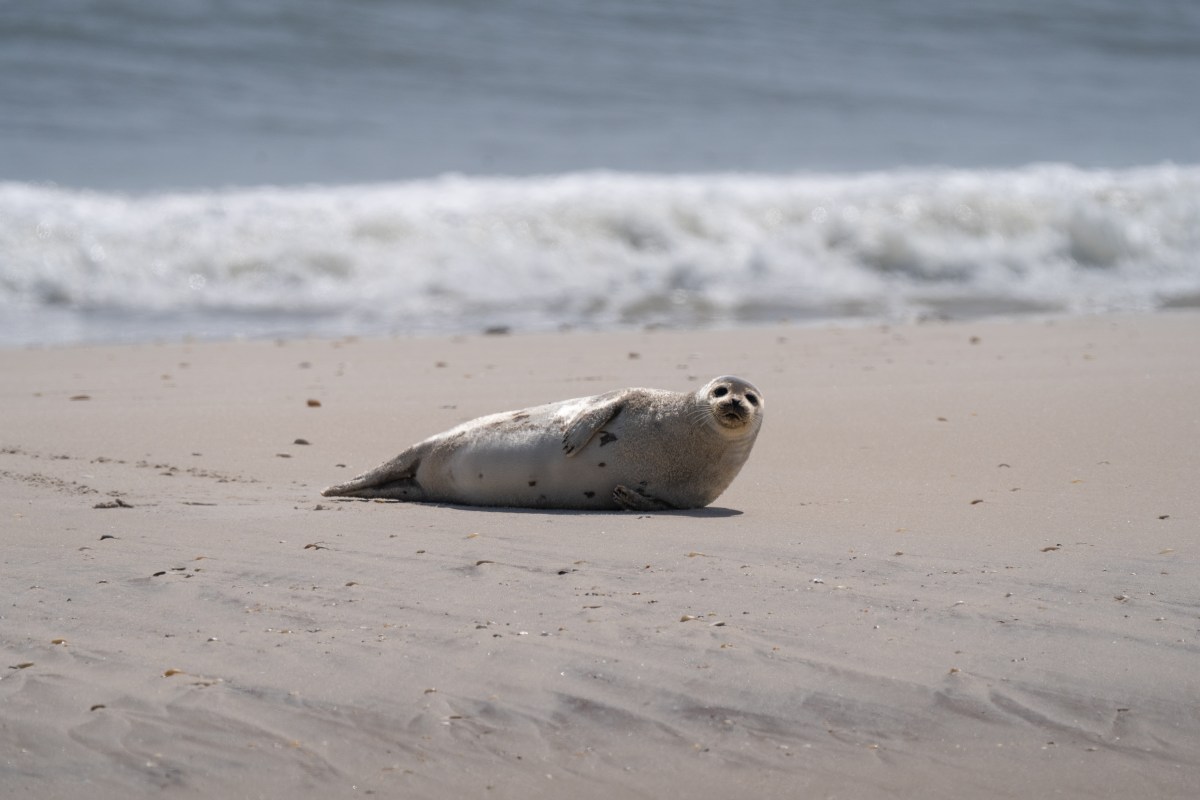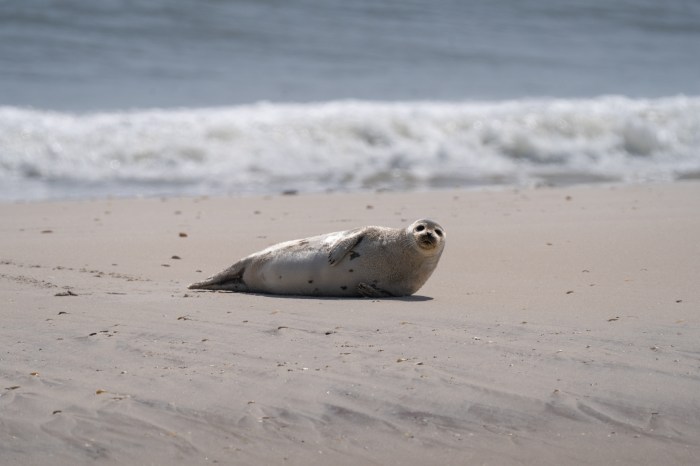
BY SEAN EGAN | The idea of a new Port Authority Bus Terminal (PABT) coming to Hell’s Kitchen is still weighing heavily on the minds of the members of Community Board 4 (CB4).
Ever since the Port Authority of New York and New Jersey announced its desire to create a new, updated terminal in late 2015 — in order to accommodate an expected 50% increase in ridership in the next 20 years — CB4, the community and local businesses have been very vocal with concerns about how the new structure might negatively affect the Hell’s Kitchen neighborhood. Thus, the forthcoming PABT project — which has been steadily moving forward due to a design competition launched by the Authority — was the sole focus of July 13’s CB4 Clinton/Hell’s Kitchen Land Use Committee meeting.
Asserting the evening would be a “really important meeting,” but nonetheless “kind of informal” and include public participation, J.D. Noland, the committee’s chair, introduced the first item on the agenda, a report from the Hell’s Kitchen Working Group. The informal group tied to the committee was assembled from community residents, stakeholders in the neighborhood, and CB4 members in order to focus on the area, and the PABT project, specifically.
Betty Mackintosh took the lead on the Hell’s Kitchen Working Group’s efforts, in order to research the area where the Port Authority is looking to build, and to articulate what CB4 would demand from the Port Authority going forward with this project. To address the former point, Mackintosh provided the committee with maps of her own design which examined an area whose boundaries stretch from W. 42nd St. and Ninth Ave. west, to the river and W. 33rd St. — taking care to note important areas, like affordable housing projects and land currently owned by the Port Authority. “You can really sense there’s a lot of transportation going on,” Mackintosh commented.
Mackintosh also penned a series of requests of Port Authority for the committee to consider and discuss. Some of the main points included respecting community character; improving air quality and decreasing vehicular congestion; improving residents’ and commuters’ safe passage; and building a solution that will satisfy demand for the next 50 to 100 years. Beneath these categories, more detailed suggestions were listed.
The most spirited debate of the night touched on the potential use of eminent domain — a process by which the government takes control of privately owned land for public works — and the language used in the bullet points. As originally written, the point said the practice “should not” be used; the committee sought to make the language more exact in their condemnation.
Stating she was “echoing the voice of the community,” CB4 Chair Delores Rubin, who was also in attendance, asserted, “Eminent domain is not acceptable to this community.” Noland was also critical of the practice, observing that history shows it “is always [used] in neighborhoods that can’t fight back.” It was agreed that the Port Authority should use land they already owned (as highlighted by the maps).
Further suggestions included: the Authority being more responsible for the maintenance of the PABT; constructing an aesthetically pleasing building; ending idling practices to help improve air quality; and that the Authority should go through the ULURP (Uniform Land Use Review Procedure) process for the project.

Among the public, community members — including PABT neighbors, such as a deacon from Metro Baptist Church — expressed dislike for the potential of an Eighth Ave. location, and firm disapproval of eminent domain. One local suggested that state of the art “scrubber systems” be put in place to curtail air pollution. A popular suggestion was simply putting a terminal in New Jersey, and light-railing commuters in, an idea the committee was favorable to.
“The idea of a single terminal on the Manhattan side is an outmoded idea,” declared Joe Restuccia, a member of the committee, saying that building in New York was “not a long-term solution.” The suggestion for New Jersey construction was thus adopted in the bullets.
In the end, the committee decided to revise the requests accordingly and incorporate the new suggestions, to be included in a letter addressed to the Port Authority, subject to approval at July 27’s CB4 full board meeting.
“We’re a very exact board, and we want to make sure [our requests] can’t be misinterpreted in any way,” Rubin told Chelsea Now in an interview after the meeting. It’s all part of an effort to be cautious, so that when they talk to the Port Authority, “We’re completely certain that this is what the community is requesting, and is what the community needs.”
“We think that finally we are starting to make it clear that Port Authority really needs to engage with the community in order to make any type of decision — and I think we’re finally getting some headway, as we’ve been getting some positive responses from Port Authority, and have been getting some great support from our elected officials,” Rubin said, noting that the board was looking to organizing a follow-up to their April town hall meeting with Port Authority in the early fall.















